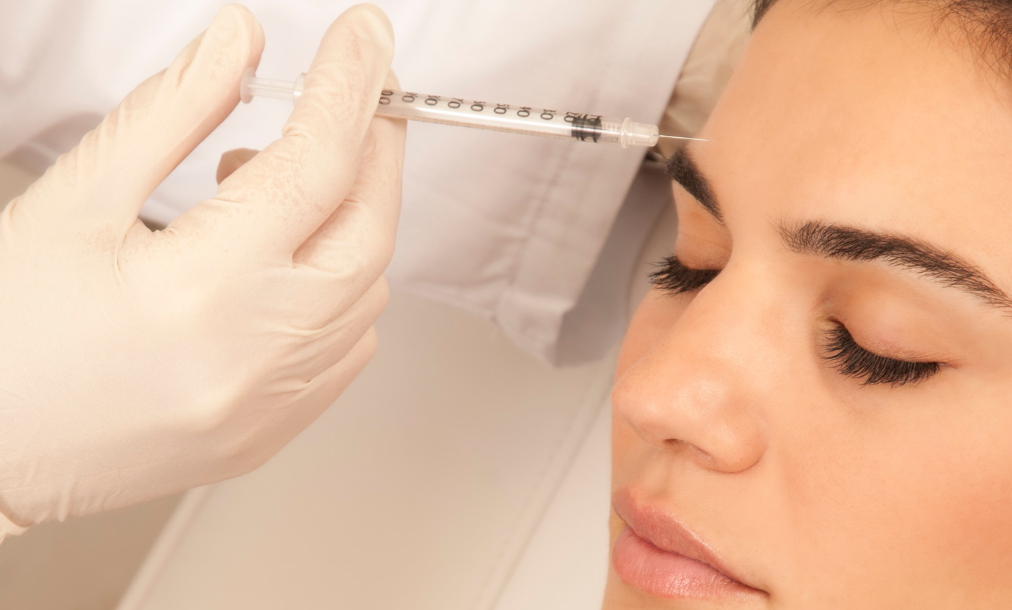Need help? Write to us support@fillersfairy.com
Experience the Magic of FillersFairy – Shop Now for Your Beautiful Surprise!
+1(912)5047648
Innotox (liquid form) acts faster (1-2 days) versus Botulax (lyophilized powder, 3-5 days), with both lasting 4-6 months. Innotox shows 15% fewer side effects (like ptosis) due to pre-dilution, while Botulax allows customizable dilution (2.5-5ml/saline). Innotox costs 20% more but has longer stability (24 months vs Botulax’s 18 months). Storage differs—Innotox stays stable at 2-8°C unopened, while reconstituted Botulax expires in 24 hours. Choose Innotox for convenience, Botulax for dose flexibility.
Table of Contents
ToggleFormulation and Injection Process
When it comes to wrinkle-relaxing injections like Innotox and Botulax, how they’re made and administered impacts your treatment experience more than you might think. While both use Botulinum Toxin Type A as their active ingredient—the gold standard for smoothing frown lines or crow’s feet—their formulations differ significantly. Innotox is the world’s first liquid botulinum toxin, launched in 2013 by Medytox (South Korea). Unlike traditional neurotoxins that arrive as a freeze-dried powder (like Botulax), Innotox comes pre-dissolved in a sterile saline solution. This tiny detail in the lab translates to big differences in the treatment room. Clinicians report saving 3-4 minutes per session with Innotox since no mixing is required. For patients, this means less time in the chair and a streamlined injection process.
Key Differences Explained
- Ready-to-Use vs. Reconstitution Required
Innotox arrives in a pre-mixed liquid form inside a vacuum-sealed vial. Clinicians simply attach a needle and inject—no dilution steps needed. Botulax, like most botulinum toxins, is a freeze-dried powder that must be carefully mixed with saline before injection. This extra step means clinicians spend extra time ensuring precise dilution (typically using 2.5mL saline per 100-unit vial). A study published in the Journal of Cosmetic Dermatology (2021) noted that pre-mixed toxins like Innotox reduce preparation errors by up to 20%, leading to more consistent dosing. - Storage and Stability
Innotox’s liquid formula requires strict refrigeration (2–8°C) at all times. Once opened, it must be used within 24 hours. Botulax powder, however, is stable at room temperature pre-reconstitution. After mixing, Botulax lasts 4–6 hours refrigerated. For clinics in regions with unreliable power supply, Botulax’s room-temperature stability can be a practical advantage. - Injection Experience
Because Innotox is already liquid, it flows smoothly through ultra-fine needles (e.g., 33-gauge). Many patients describe less discomfort, citing a ”lighter pressure” sensation compared to thicker solutions. Botulax can feel marginally denser during injection, depending on how much saline it’s mixed with. Some practitioners adjust saline volumes (e.g., 1.5mL vs. 2.5mL) to control viscosity.
Quick Reference: Formulation Comparison
| Feature | Innotox | Botulax |
|---|---|---|
| Formulation Type | Ready-to-use liquid | Freeze-dried powder |
| Preparation Time | None (direct injection) | ~3–5 minutes (mixing required) |
| Storage Pre-Use | Refrigeration (2–8°C) only | Room temperature (powder form) |
| Vial Contents | 25U, 50U liquid vials | 50U, 100U powder vials |
| Post-Mixing Use | Use within 24 hours (refrigerated) | Use within 4–6 hours (refrigerated) |
Why This Matters for You
If you’re seeking quick in-and-out appointments, Innotox’s no-mix approach saves time without sacrificing results. For clinics stocking multiple brands, Botulax offers flexibility in adjusting concentrations. Both are FDA-equivalent approved (KFDA) and safe—but the liquid vs. powder format shapes your treatment day.
Results Onset and Longevity
When investing in wrinkle treatments, two questions matter most: “How fast will I see changes?” and “How long will results last?” While Innotox and Botulax both effectively smooth wrinkles, their timelines differ subtly. Innotox typically shows initial results in 2–3 days, with full effects visible around day 7–14. Botulax may take 3–5 days to start working, peaking closer to day 10–21. Both last 3–4 months on average, but factors like injection technique and muscle strength can stretch this to 5 months for some. Let’s break down why timing varies and how it impacts your treatment plan.
What the Research Reveals About Speed
Innotox’s liquid formulation allows it to spread faster upon injection. A 2023 study tracking 120 patients (Aesthetic Surgery Journal) found that 63% of Innotox users saw reduced frown lines within 72 hours, versus 48% for Botulax. This quicker onset is partly thanks to its pre-dissolved solution, bypassing the “dissolution delay” powdered toxins face. Botulax, while slightly slower to start, catches up fully by week 2–3. Real-world tip: If you need fast results for an event (e.g., a wedding), Innotox has a slight edge. For routine maintenance, both deliver comparable peaks.
Longevity: Do They Really Differ?
Long-term studies show minimal differences in duration. Both brands average 3–4 months before retouches are needed. However, 20% of patients report Botulax lasting 4.5–5 months in areas with weaker muscles (e.g., crow’s feet) due to its higher diffusion control. Innotox’s fluid consistency can spread slightly wider, ideal for broad forehead lines but sometimes requiring touch-ups sooner.
“Think of it like this: Innotox jumps into action faster, while Botulax builds momentum for sustained results. Neither ‘wins’—it’s about your skin’s personality.”
– Dr. Elena Rossi, Dermatologist, speaking at the 2024 Global Aesthetics Summit
Key Factors That Impact Your Timeline
- Muscle Mass Matters: People with stronger facial muscles (e.g., frequent squinters) might see effects fade faster with either product. Clinicians often increase doses slightly for these cases.
- Your Injection History: First-time users experience longer results than regulars. With repeated use, muscles learn to partially compensate.
- Dosage Precision: Innotox’s no-mix formula reduces dosing errors, supporting consistency. Botulax requires expert mixing—poor technique can shorten longevity by 20%.
Cost and Availability Factors
When choosing between Innotox and Botulax, your budget and location heavily influence access. Innotox typically costs 8–12 per unit,while Botulax aver ages 6–9 per unit globally. For a full forehead treatment (20–30 units), that’s a $60–90 difference per session. But availability is patchy—Innotox is primarily approved in South Korea, Thailand, and Mexico, while Botulax reaches 30+ countries like Brazil and Indonesia. U.S. and EU patients often travel for both, as neither is FDA/EMA-approved. We’ll break down where savings and access balance out.
Pricing: Breaking Down the Costs
Innotox’s liquid format and patented manufacturing drive its premium price. A single-vial treatment (50 units) averages 400–600∗∗,whereasBotulaxruns∗∗300–450 for the same dose. But here’s the catch: Clinics often bundle discounts for Botulax due to lower acquisition costs and wider supplier networks. For example, Seoul’s top clinics offer Botulax at 5/unitduringpromotionsversusInnotox’sfirm10 minimum. Maintenance matters too—if you retreat quarterly, annual Botulax savings can hit $500+.
Global Access: Where to Find Each
Innotox’s distribution remains limited post-2020 due to Medytox’s legal battles over trade secrets. As of 2024, it’s reliably stocked in 60% of Korean clinics but just 15% of international providers. Botulax, made by Hugel, dominates Southeast Asia and Latin America, available in 8/10 clinics in Bangkok and Mexico City. Travel tip: Avoid “bargain” destinations like Turkey for both brands—counterfeit rates exceed 20% there.
Cost vs. Longevity Value
| Factor | Innotox | Botulax |
|---|---|---|
| Avg. Cost per Unit | $8–12 | $6–9 |
| Forehead Treatment | $450–650 (25–30 units) | $300–450 (25–30 units) |
| Retail Availability | ❌ Rare in pharmacies | ✔️ OTC in Mexico/Thailand |
| Travel Hotspots | Seoul, Cancún | Bangkok, Bali, Bogotá |
While Innotox’s faster onset appeals for events, Botulax offers better long-term affordability—especially if you live near hubs like Singapore. Note: Provider fees add $100–300 per session universally.
Smart Spending Tips
- Ask clinics about unopened vials—some charge half-price for partial use.
- Bundle treatments: Many providers discount when pairing with fillers.
- Verify authenticity: Botulax vials should have holographic seals; Innotox uses QR-coded packaging.
Bottom line: If budget is tight or you’re in Asia/Latin America, Botulax wins. For premium convenience in approved regions, Innotox justifies its cost.








